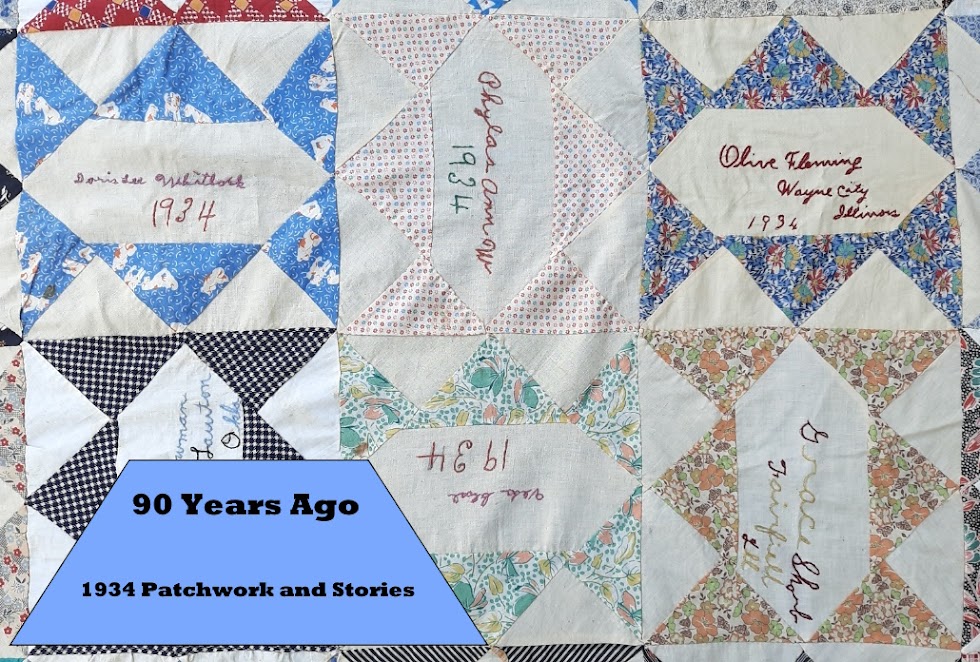 |
| Romsey Quilt - Red Cross Collection, Victoria |
 |
| Cheltenham State School - Red Cross Collection, Victoria |
Not a lot of these Australian quilts are still in existence. There seems to be less than two dozen documented quilts but they are not often on display.
Recently I discovered a reference to another one of these Red Cross quilts. This newspaper article was first published in the Pambula (New South Wales) 'Voice' on 26th March 1937, and then appeared in the Delegate (New South Wales) 'Argus' on 1st April 1937.
Historic QuiltPresented to Hospital
At last Saturday night's Red Cross meeting, the president (Mrs. D. V. Hart) handed to Mrs. C. A. Woollard (secretary of Pambula Hospital Auxiliary) a quilt of historic interest. It appears that, away back in the early days of the war, the late Mrs. J. W. Haywood, then president of the local Red Cross and a foremost patriotic worker, suggested the idea of raising funds by working names of soldiers, local people and visitors on a quilt at a charge of 1/- (one shilling) each. The intention, Mrs Woollard stated, on Saturday, was to present the finished article to the hospital for the use of returned soldier patients from time to time. Scores of names were duly worked on the quilt by local ladies, and many memories of other days and people who have left the district were revived by a look at the finished article on Saturday night. Among them we noticed the names of Professor Peden and the late Sir Austin Chapman, once Federal member for the electorate. Mr. Graham, Red Cross Commissioner, suggested that as the quilt was an article of great sentimental value is should be placed in a glass case and kept at the hospital entrance as a memento, but it was decided to observe the original intention. Mrs. Hart therefore made the presentation, and Mrs. Woollard suitably acknowledged it on behalf of the auxiliary.
What a great story - but so many questions! If the quilt was started in 'the early days of the war', say 1915, why was it being presented in 1937? Did it take 22 years to make, or was it waiting for Mrs. D. V. Hart to finish the quilting? How long did the quilt last in a hospital laundry? And what is the likelihood that it still exists?
I haven't found any other references to this quilt. Both Professor Peden and Sir Austin Chapman had very productive and interesting lives. Pambula is a lovely place for summer holidays, next time I am there I will look for some answers.











